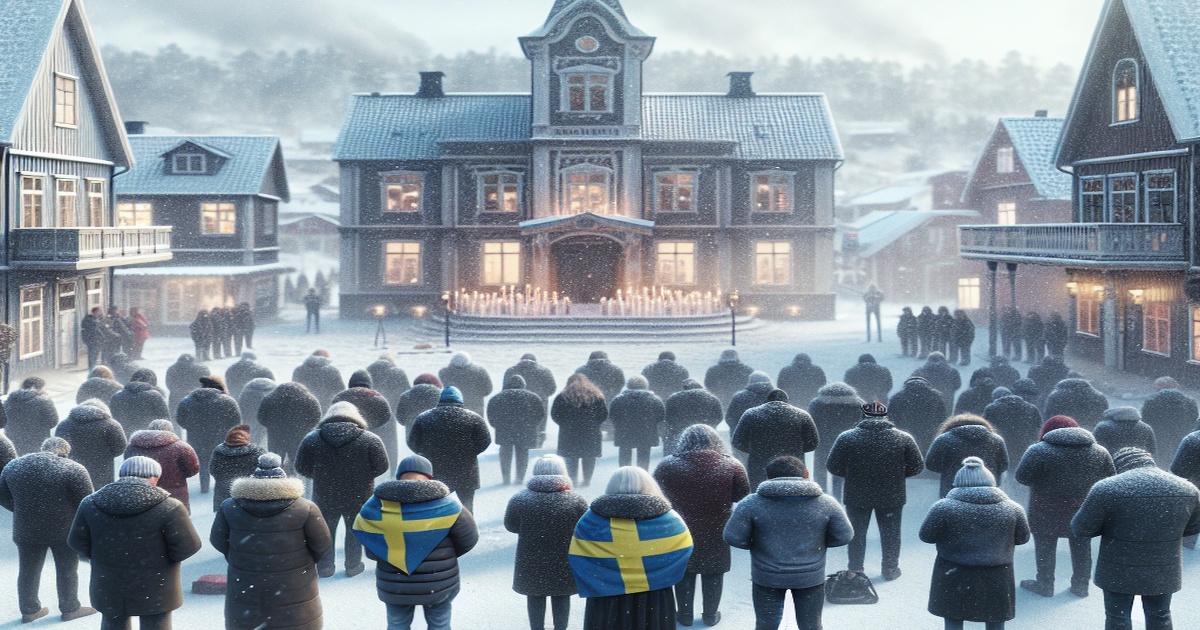In the midst of blaring alarms, frantic screams, and the sound of gunfire, Salim Iskef—a 28-year-old Syrian Christian who once fled war-torn Aleppo for a secure life in Sweden—uttered his final words to his fiancée and mother over the phone. His poignant farewell, asking his mother to care for both herself and his beloved, was delivered just before the tragedy struck.
On that fateful day in the historic city of Orebro, a rare site of calm in central Sweden, the suspected gunman Rickard Andersson, aged 35, launched an attack at Risbergska School. Described as a loner with little contact with others, Andersson entered the school carrying concealed firearms in a guitar case and changed into military-style clothing before the assault began. Panic erupted nearly instantly as students and staff experienced chaos, with many hiding in classrooms, bathrooms, or finding refuge in nearby establishments.
Witnesses vividly recalled moments of terror—gunshots overwhelming the corridors, desperate pleas for mercy, and individuals frantically trying to escape the unfolding nightmare. One classroom teacher recounted the eruption of panic following the sound of approaching footsteps, while another witness described the heart-stopping instant when beams of hope dissipated amid the relentless barrage of gunfire.
First responders arrived within minutes to a scene engulfed in smoke and blood, where officers had to navigate through a vast campus strewn with casualties and injured individuals. The discovery of the perpetrator’s body, left amidst scattered weapons and ammunition, punctuated the grim aftermath of what has been deemed the worst gun massacre in Sweden’s history. As investigators continue their work, families of the victims and survivors struggle with the shock and lasting trauma, questioning not only the motive behind the tragedy but also the future of a community deeply scarred by loss.
Authorities have neither conclusively identified a clear motive nor ruled out a racially charged angle to the crime, despite early speculation. In response to the incident, the Swedish government has proposed tighter gun control measures, aiming to prevent such devastating episodes in the future, even as grieving communities face a long and challenging road to recovery.







7 Comments
Marishka
“This article forces us to confront our reality—it is a powerful reminder of the need to address gun violence head-on.”
Pupsik
“By not downplaying the violence, the article serves as a wake-up call. We need this kind of honesty to spur action.”
Marishka
“Strong reporting like this is essential; it lays the groundwork for important conversations about policy reform and public safety.”
Pupsik
“I feel that the writing, while intense, reflects the seriousness of the ordeal. Sometimes, such details are necessary.”
Marishka
“Too much emphasis on the minute details of horror rather than a broader analysis of gun violence and its roots.”
Donatello
“It brings much-needed attention to the threat of violence even in places we consider safe. Bold reporting can prompt reform.”
Leonardo
“I support this level of detailed reporting; it respects the victims’ stories and emphasizes that we cannot ignore such tragedies.”